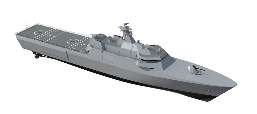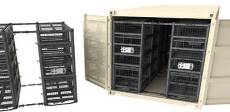‘Amphibious warfare is the most complex proposition for the future of ADF combat power development to 2025.’
– Chief of Navy, 2005
With growing instability in the geopolitical climate of the world, focus must be put into refinement of Defence. Acquisition of reliable equipment, sustainment of our ready force and accurate training scenarios to ensure Defence’s ability to protect Australia but also project force as the government deems necessary. Babones (2019) explains the United States may no longer be in a position to come to Australia’s defence, yet Australia still only spends ‘1.8% of its gross domestic product on defence’ (in 2019). Is this enough? Are all of Australia’s latest projects purely capability driven or also political in nature?
The decision for the Fleet's way forward
The Royal Australian Navy (RAN) has experienced significant changes in the past decade in light of growing responsibility and tasking. Navy’s tempo is increasing, which is in part due to the operational focus being shifted closer to home and the growing requirement for humanitarian response. All of its vessels and aircraft are either being replaced or a replacement is being planned within a ten-year timeframe. But with the climate moving from counter-insurgency and piracy to the potential of a more significant hostilities, balanced with supplementing disaster response, thought must be given to the effective capacity of current and future platforms. The first Government listed purpose of the 2016 White Paper outlines priority on ‘(investment in) more capable, agile and potent future force that has greater capacity to respond to strategic risk’. Does the current capability match the White Paper's purpose of intent?
Current Amphibious Capability
Recent incidents in the Indo-Pacific and South West Pacific have shown the critical importance of an amphibious capability. If tensions escalate, the ability for Australia to project power is crucial for the defence of itself as well as our pacific partners. If the ability – or willingness – for the United States to project force is coming into question, who will take its place?
The RAN defines its amphibious warfare force as having: mobility in mass; a unique cross-domain mobility; and being useful across the full spectrum of military operations. One could argue that the concentration of Australia’s amphibious force in two large, costly and slow moving vessels, i.e. the Landing Helicopter Docks (LHD), could counter a ‘mobile force’ and be a risk to be exploited by potential adversaries. The United States Marine Corps Commandant, Gen. David H. Berger (2019), highlights ‘it would be illogical to concentrate our forces on a few large ships.’ Therefore is it worth Australia taking the advantage by forward planning new approaches to traditional ‘amphibious platforms' through developing a new type of amphibious deployability tailored to our operational theatres as an island nation?
Next Steps for Capability, Troop Deployment
If past RIMPAC and Talisman Sabre exercises have shown Australia anything, it is that speed is key. Getting boots on the ground as soon as possible is a key requirement, especially in contested territory or waters. Fleet concentrations can only protect an asset for so long when a requirement to ‘dock down’ for many hours exists while preforming an amphibious landing from one concentrated asset.
Investigating smaller and modular vessels to transport troops and/or equipment will enable more agile and flexible force concentration throughout a task group and the ability to react to situations. The loss of a single ship does not end the ability to project force when you have multiple landing ships with the same mission. Sun Tzu says, ‘Whether to concentrate or to divide your troops, must be decided by circumstances.’ You do not have this option when your landing forces are all concentrated on one or two assets.
Potential points of investigation:

‘Crossover’ frigate platforms are smaller, modular ships that are the size of a frigate but can serve as an amphibious assault ship if fitted that way. Vavasser (2019) reports that the 'Crossover' is a new design which was introduced as the next step in what frigates can bring in capabilities at sea.

Tilt Rotor Aircraft enable troops and supplies to be flown ashore at the speed of a fixed wing aircraft but can land in more remote locations, including on current amphibious vessels. This capability could heavily complement the current Mission Support Helicopters (MSH) operated from RAN vessels in taking up a specific amphibious landing role, ensuring troops get to shore faster to achieve their mission.

Modular logistics solutions enable users to transport stores and equipment by air, land or sea just as they are operated ashore. The benefit of a modular transportable stores solution is it reduces man-hours of packing and preparation and increased accountability as each unit is adjustable and lockable.
Innovative strategic policy for the future
Refining the ADF’s ability to be agile during current and future operations is vital. This is reiterated by Graham (2019) stating that ‘the ADF needs risk-worthy platforms, the ADF concentrates too much capability in too few platforms.’ When you include factors of growing regional instability and environmental or humanitarian events, a combination of relatively few events may be enough of a cataclysm to overstretch and saturate the ADF's ability to react.
How can the ADF adapt to changing theatres? Can the ADF maintain a strong capable force to protect freedom of navigation, trade and strategic assets at the request of the Australian Government with the current asset and fleet structure? Could the ADF react to both a force projection and humanitarian tasking simultaneously or with short reconstitution times? While the current amphibious capability may suffice for now, it needs to explore these questions if it is to be ready for the challenges of the future.









